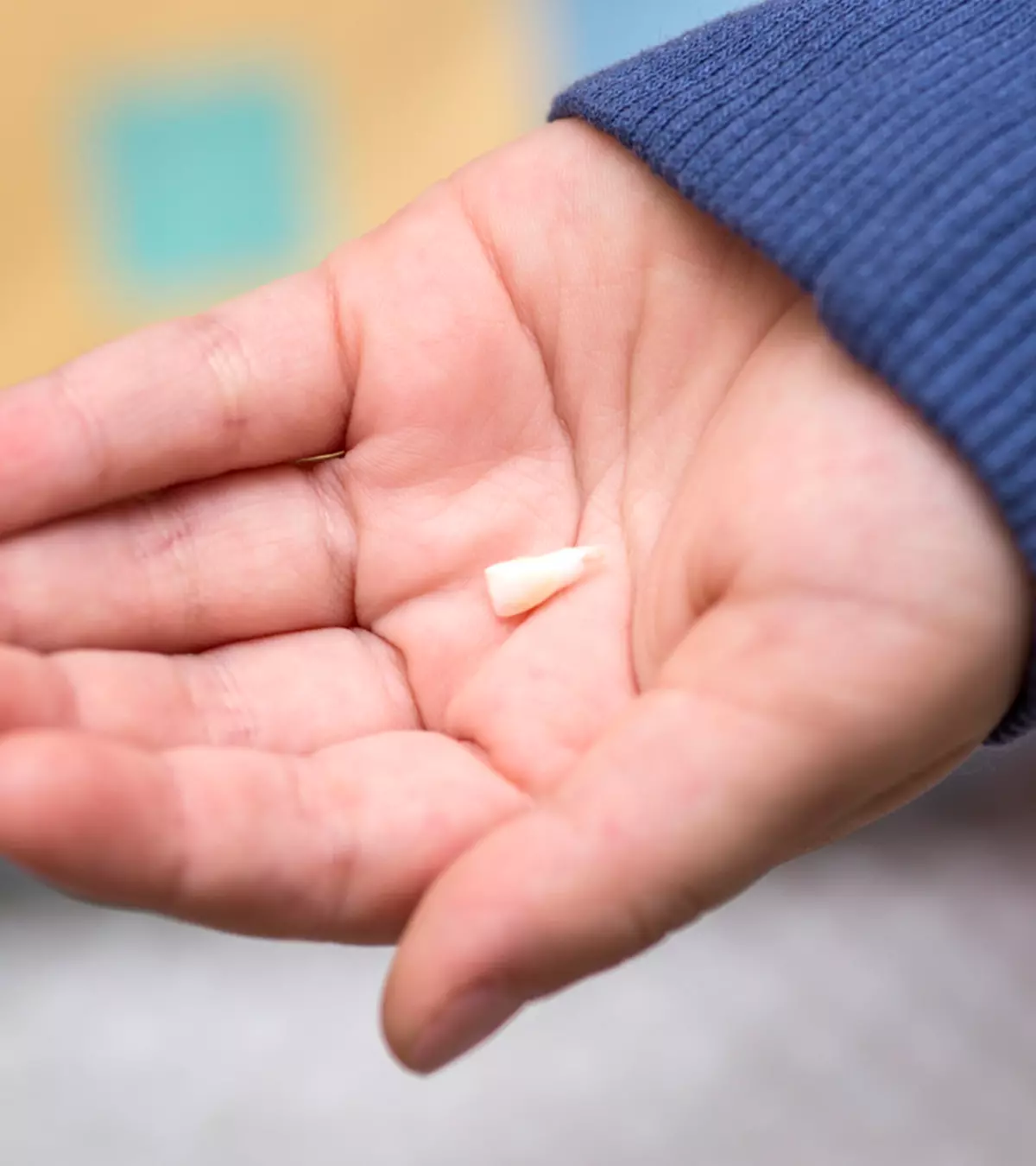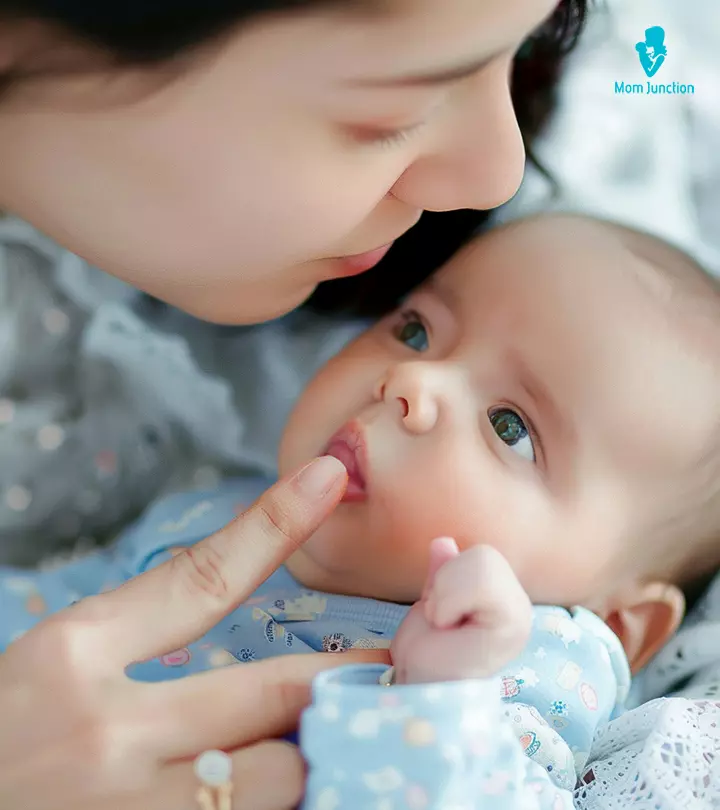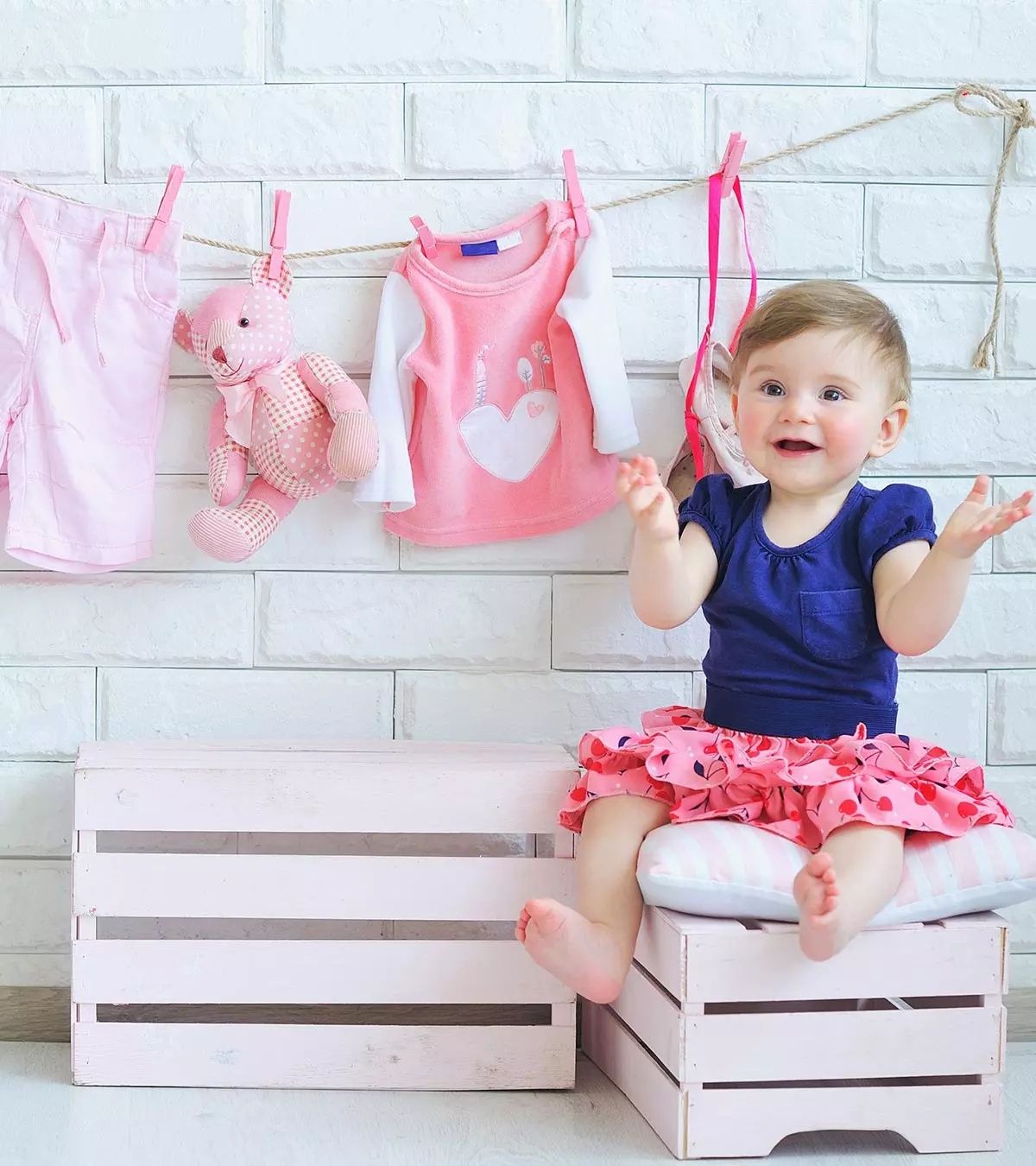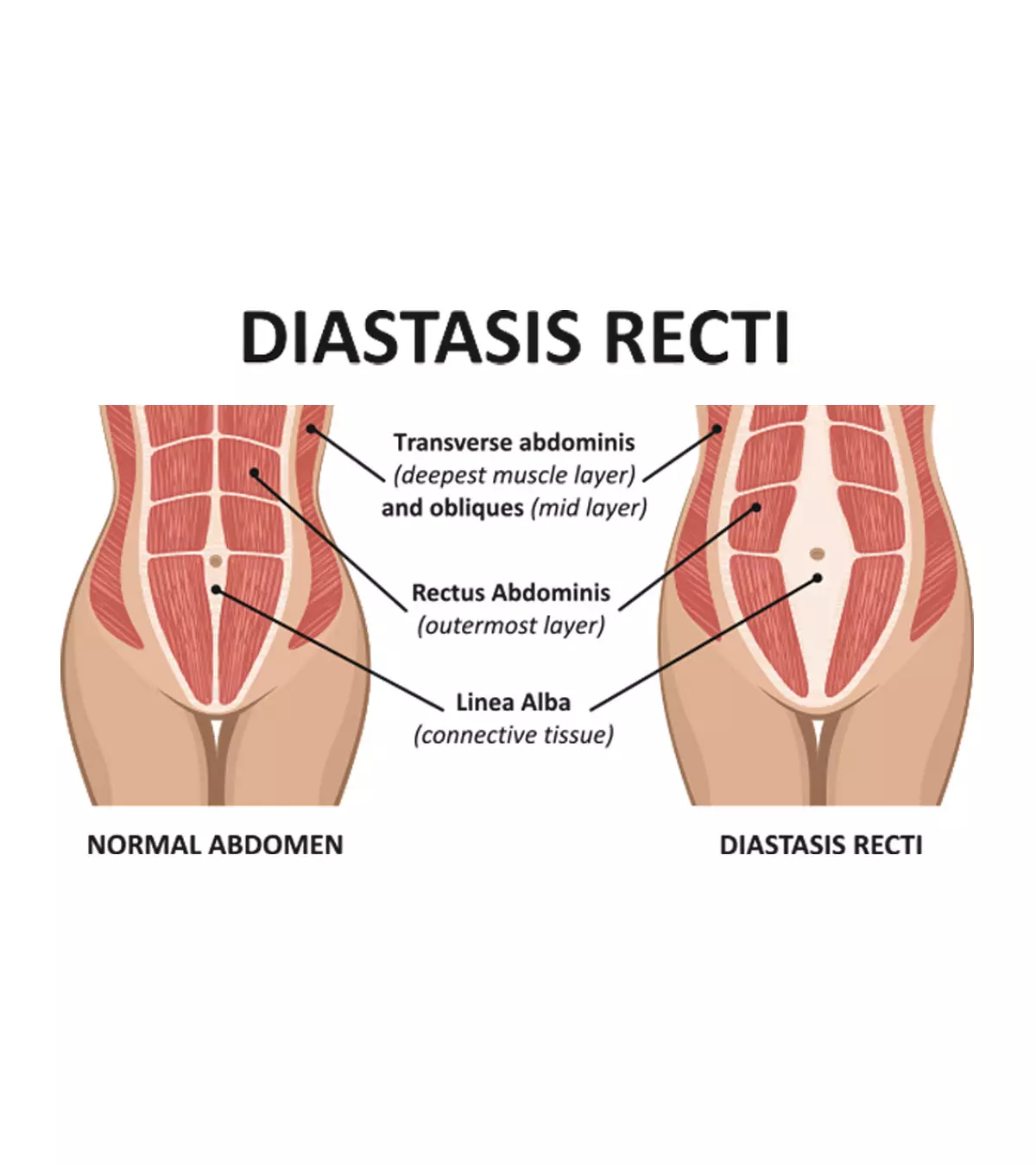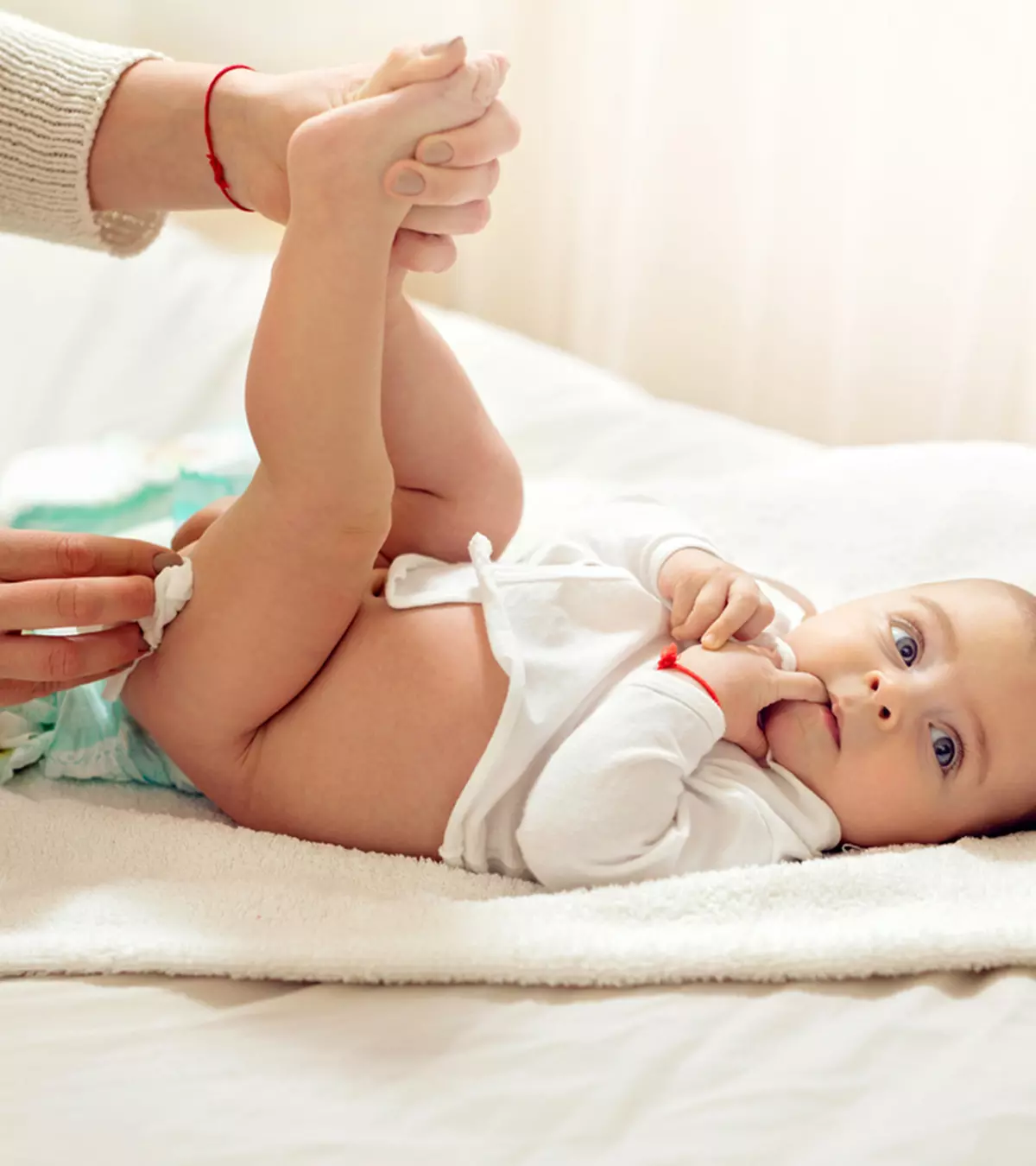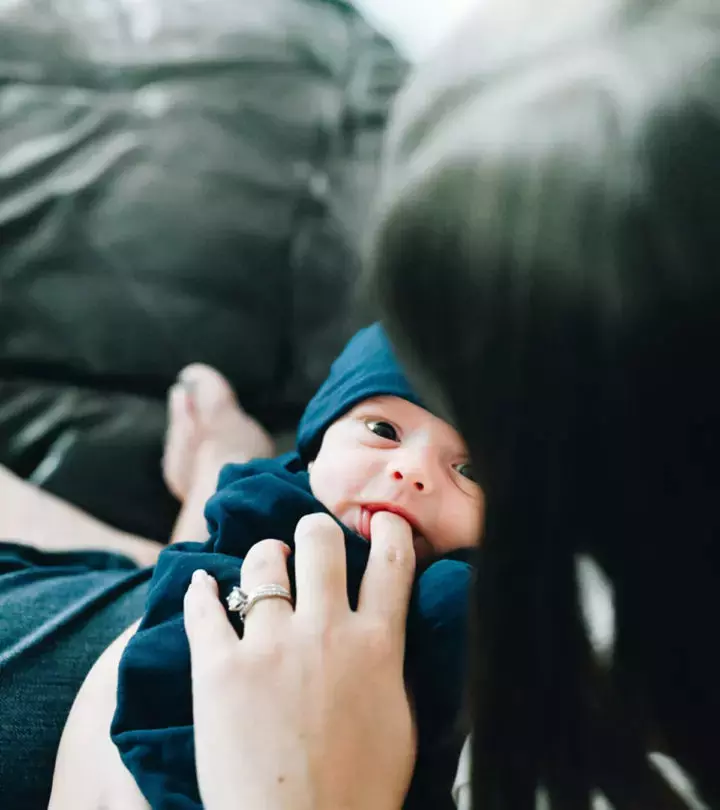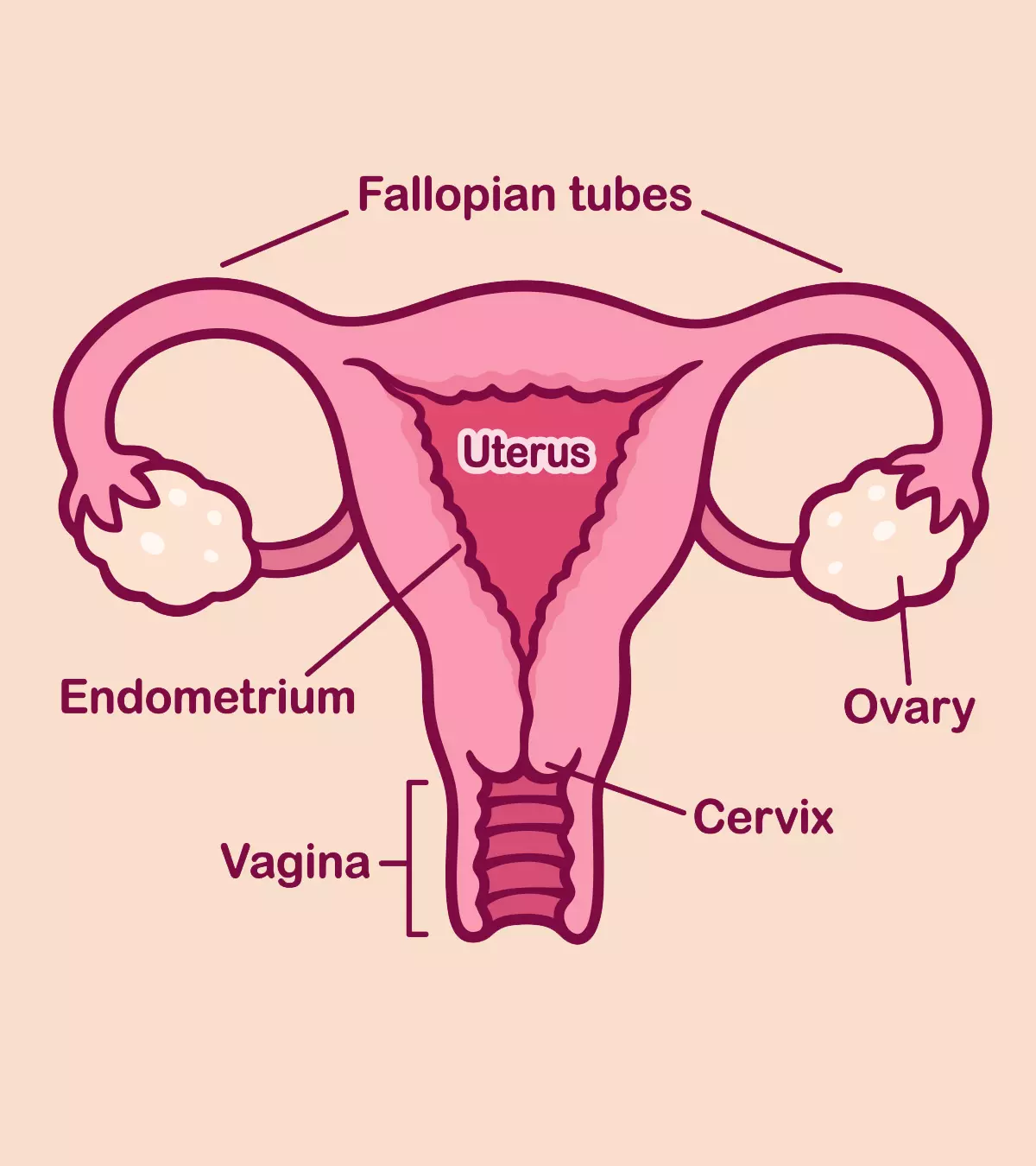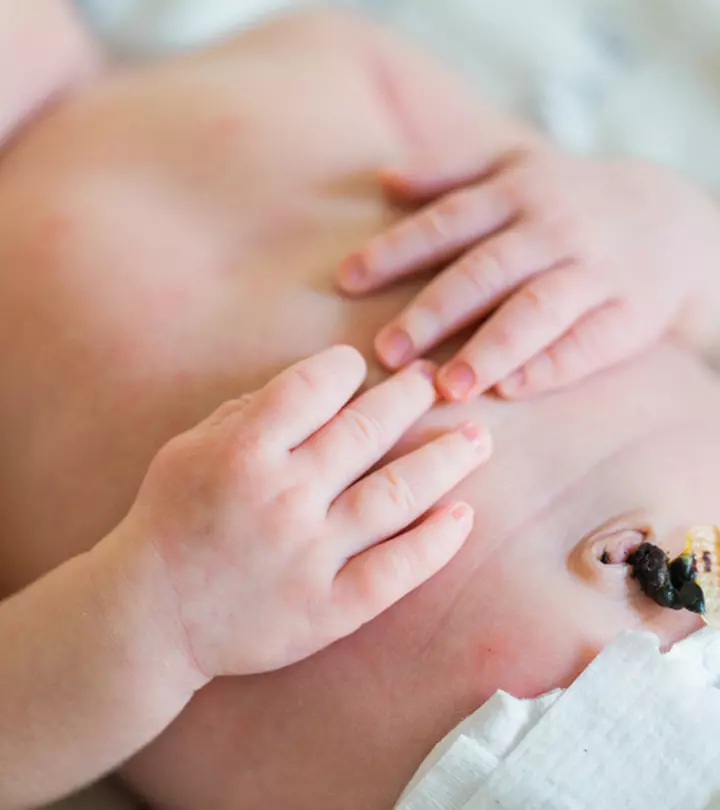
Image: Shutterstock
Belly button bleeding in a newborn is usually not a cause for concern. The umbilical cord helps the placenta to attach to the fetus and supplies blood and nutrients. After delivery, it is clamped and cut, and the remaining part, on your newborn’s abdomen, is the umbilical stump. The bleeding, also called umbilical bleeding, causes only a few drops of blood on the umbilical stump. The bleeding usually happens before or after the umbilical stump falls off. This post acquaints you with the cause of belly button bleeding, its treatment, and tips to help an umbilical stump heal faster.
Key Pointers
- Belly button of a newborn could bleed due to the rubbing or falling of the umbilical stump.
- It is not a cause for concern and can be taken care of.
- In rare cases, you may consult your doctor if you notice your newborn getting affected adversely.
Normal Umbilical Cord Bleeding
A small amount of umbilical cord bleeding is normal while it begins to separate from the baby’s body. You may notice a few drops of blood coming from the stump during or after it falls off. Bleeding may also occur if clothes or diapers rub against the stump (1).
A few drops of bleeding that subside quickly is normal and not a cause for worry. Sometimes, cleaning or applying pressure on the stump slows or stops the bleeding. Umbilical bleeding is considered abnormal if the blood appears each time you wipe the area.
 Quick fact
Quick factCauses Of Baby Belly Button Bleeding
Newborn belly button bleeding can be due to various reasons. In most cases, it is not a cause for concern and part of the natural healing process. Below are the common reasons for belly button bleeding in newborns (2).
- Clothes or diaper rubbing against the umbilical stump
- The umbilical stump begins to separate from the body
Although minor bleeding from the newborn’s belly button may resolve itself, persistent bleeding requires medical attention.
 Quick fact
Quick factWhen Does The Umbilical Cord Fall Off?
The umbilical cord may fall off within one to two weeks in most newborns (3). This may occur early or later in some babies without any specific reasons. During the initial days of life, the umbilical cord stump begins to dry and become smaller in size, falling off eventually.
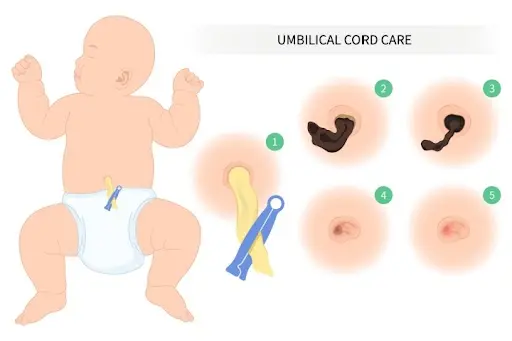
How To Care For The Umbilical Cord Stump?
The American Academy of Pediatrics (AAP) and the American College of Obstetricians and Gynecologists recommend dry cord care, which means natural drying of the umbilical stump. Alcohol cord care is usually advised in conditions that pose a high risk of infection and only if recommended by the doctor.
The following tips may help in umbilical stump care (4) (5).
- Let the stump fall off on its own: Pulling the stump is not recommended since this may increase bleeding or the risk of umbilical cord infection.
- Keep the stump dry and clean: Bathe the baby with a damp washcloth or sponge to keep the stump dry. Also, pat dry the area around the stump with a small soft cloth or towel after bath to ensure it stays dry.
- Expose to air: You may keep the front of the diaper folded below the umbilical stump to expose it to the air. This may enhance the healing process.
- Changing diapers on time: This may prevent wetting or soiling the umbilical area. Practices such as swabbing the stump with rubbing alcohol during each diaper change are not recommended anymore since this may kill valuable bacteria. Clean the cord with a mild soap and warm water if any pee or poop touches it by mistake.

- Choose loose-fitting clothes: Use loose baby clothes with delicate materials to avoid pressing and rubbing the stump.
Below are some don’ts to remember during umbilical cord care:
- Do not touch the cord without washing your hands first.
- Do not rub the cord with alcohol unless recommended by the doctor.
- Don’t use antiseptic creams or cleaning solutions unless prescribed by a doctor.
- Do not remove the clamp on the cord, as it may cause an injury.
- Don’t tug or pull the cord to remove it, as it can cause scarring and interrupt healing.
- Avoid bathing the infant in the tub or sink until the umbilical cord falls off.
The color of the umbilical stump may change from yellow to green and black while it is drying. There is no need to intervene since it is a natural change in color before the umbilical stump falls away.
When To Worry About Your Baby’s Umbilical Bleeding?
You may seek immediate medical care for belly button bleeding in newborn in the following situations (3).
- Umbilical stump continues to bleed even after applying direct pressure as instructed by the pediatrician
- Few drops of blood are seen for more than three days
- Newborn has a fever, indicating infection
- Redness, foul discharge, or swelling around the stump
- Baby cries when the area around the belly button is touched
- Rashes, blisters, or pimples around the belly button
- Cord does not fall within the stipulated time frame, persisting beyond three weeks
 Caution
CautionTreatment For Belly Button Bleeding
Doctors may recommend trying homecare over the telephone for uncomplicated umbilical bleeding in newborns. They may often instruct you to apply gentle pressure on the cord holding a sterile gauze pad. Applying pressure with bare hands may increase the risk of infections, making it essential to use a sterile gauze pad. Seek immediate medical care if the bleeding is not resolved after homecare interventions (2).
Babies with infections may receive antibiotics. Fresh frozen plasmaiMade by separating plasma from blood and used to treat coagulation factor deficiencies. , factor concentrateiTreatment for hemophilia where missing clotting factor proteins are injected into the blood. , and vitamin K may be prescribed if the bleeding is diagnosed to be a bleeding disorder.
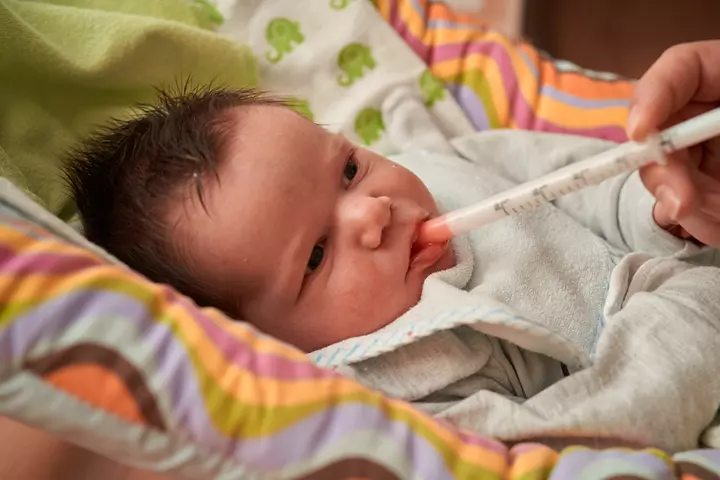
Frequently Asked Questions
1. Can I put a bandaid on my newborn’s belly button?
The belly button should be exposed to air for proper healing. Bandaids or bandages are not required as they hinder airflow around the umbilical stump (5).
2. How soon can I bathe the baby after the umbilical cord falls off?
You may bathe the newborn soon after the umbilical stump falls off. However, at times, the area may not dry completely, resulting in umbilical granuloma in newborns. This small, red mass of tissue may have a slightly oozing yellowish discharge and can be found on the belly button. The condition usually resolves in around a week, and you must be careful to keep the area dry (6).
3. What happens if a newborn’s belly button gets wet?
If a newborn’s belly button gets wet and is not kept dry, it may delay the healing process and increase the risk of various infections (7).
4. How long would the belly button bleed after the umbilical cord falls off?
It is usual for the umbilical cord to bleed slightly after it falls off, as the area may still be raw and moist. However, if the bleeding continues for more than a few days or is heavy, it is essential to consult a healthcare provider.
5. What does it mean when a baby’s belly button bleeds?
A baby’s belly button, also known as the umbilicus, can occasionally bleed after the umbilical cord falls off. It is typically a normal and harmless process within the first few weeks of a baby’s life. However, suppose the bleeding persists or is accompanied by other symptoms. In that case, it is essential to consult a healthcare provider as it may indicate an underlying issue, such as an infection (3). Keeping the area clean and dry is also important to prevent further irritation and potential infection (6).
6. How do I know if my newborn belly button is infected?
If you observe redness, inflammation, swelling, or any discharge from your newborn’s belly button, it could indicate an infection containing pus (10). It is important to pay attention to these symptoms and seek medical attention if they persist or worsen.
7. How long does a newborn belly button take to heal?
Proper belly button care can help ensure a smooth and successful healing process. The average time for a newborn’s belly button to heal is about 7-10 days. However, it is important to note that the healing period can vary, and it is not uncommon for it to take up to 3 weeks for complete healing (11).
8. Is it okay if my baby’s umbilical cord falls off early?
It is normal for a baby’s umbilical cord to fall off within one to three weeks of life (11). However, if the umbilical cord falls off earlier than this, it is important to speak with a healthcare provider to ensure that there are no underlying issues (3).
9. Do babies feel pain when their umbilical cord falls off?
The umbilical cord has no nerves, meaning your baby cannot feel anything when the doctor cuts it. There is no pain involved for your baby during this process. As the cord dries, shrinks, and falls off, it does not cause discomfort for the baby either. It is a completely painless process for your little one (12).
10. Can I put breast milk on my baby’s belly button?
Pediatrician Dr. Bidisha Sarkar says, “It is safe to put breast milk on your baby’s belly button after the umbilical cord has fallen off and healed completely. Also, applying warm, expressed breast milk may help keep the area clean, protected from infection, and soothe any discomfort or itching during the healing process.”
Belly button bleeding in newborns is fairly common when the umbilical stump is about to fall off or has fallen off already. The bleeding usually stops on its own, and you can clean the area with a dry cloth. But if the bleeding persists and there are signs of an infection surrounding the stump area, consult with the pediatrician. It is advised that you let the stump fall off on its own and not manually intervene with it as it might increase the chances of infection. Dress your baby in light and breezy clothes and ensure that the stump is not getting brushed.
Infographic: Differences Between Belly Button Infection Bleeding And Bleeding Disorders
Newborns may have belly button bleeding due to bleeding disorders such as coagulation factor deficienciesiLow, missing, or ineffective proteins, also known as factors, in the blood coagulation or clotting process. , including vitamin K deficiency, immune thrombocytopeniaiA condition that prevents blood clotting because of low platelet count. , hemophiliaiGenetic disorder in which blood does not clot properly due to missing blood-clotting proteins. , and liver diseases. Umbilical infections can also cause belly button bleeding. Go through the infographic to know the difference between belly button bleeding in umbilical infection and bleeding disorders. Illustration: Momjunction Design Team
Learn how to care for your newborn’s umbilical cord stump and reduce the risk of infection. Understand adequate umbilical cord care and what to do if an infection occurs.
References
1. Umbilical Cord Bleeding; Children’s Hospital of Philadelphia
2. Umbilical Cord Bleeding (Newborn); FairView
3. Umbilical Cord Symptoms; Seattle Children’s Hospital
4. Umbilical care; Raisingchildren; Australian Parenting Website
5. Umbilical cord care; Pregnancy Birth & Baby
6. Umbilical cord care; American Academy of Pediatrics
7. What Should You Know About Your Baby’s Umbilical Cord? Cincinnati Children’s Hospital
8. Umbilical Cord Care Cleveland Clinic
9. Vitamin K Deficiency Bleeding in the Newborn Stanford Children’s
10. Umbilical Cord Symptoms; American Academy of Pediatrics
11. Umbilical cord care: Do’s and don’ts for parents; Mayo Clinic
12. Umbilical Cord Care & Appearance; Cleveland Clinic
Community Experiences
Join the conversation and become a part of our nurturing community! Share your stories, experiences, and insights to connect with fellow parents.
Read full bio of Dr. Dur Afshar Agha
- Dr. Bidisha Sarkar is a pediatrician with nine years of experience. She did her graduation in Medicine from NRS Medical College, Kolkata and holds specialization in Pediatrics. Dr. Sarkar currently practices at KIMS Hospital in Hyderabad, India.
 Dr. Bidisha Sarkar is a pediatrician with nine years of experience. She did her graduation in Medicine from NRS Medical College, Kolkata and holds specialization in Pediatrics. Dr. Sarkar currently practices at KIMS Hospital in Hyderabad, India.
Dr. Bidisha Sarkar is a pediatrician with nine years of experience. She did her graduation in Medicine from NRS Medical College, Kolkata and holds specialization in Pediatrics. Dr. Sarkar currently practices at KIMS Hospital in Hyderabad, India.
Read full bio of Dr Bisny T. Joseph
Read full bio of Rohit Garoo
Read full bio of Shinta Liz Sunny











